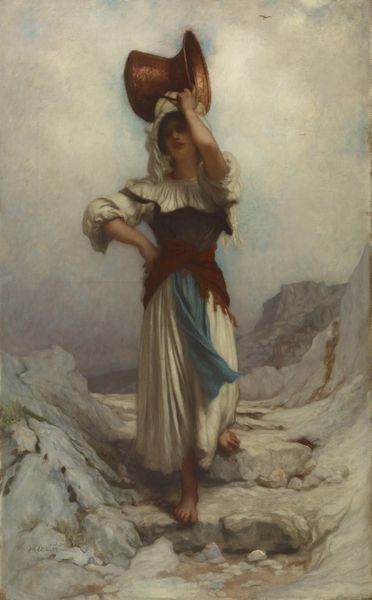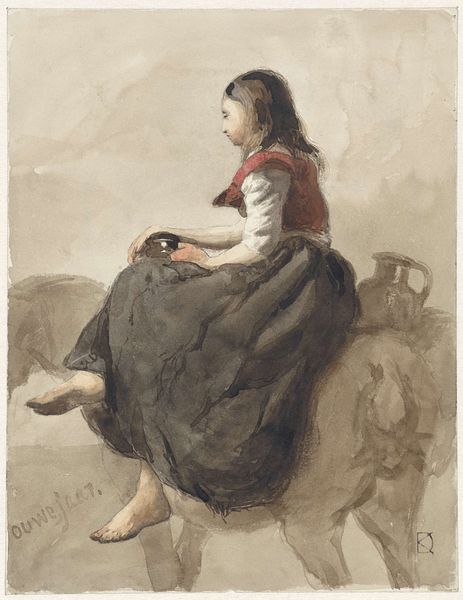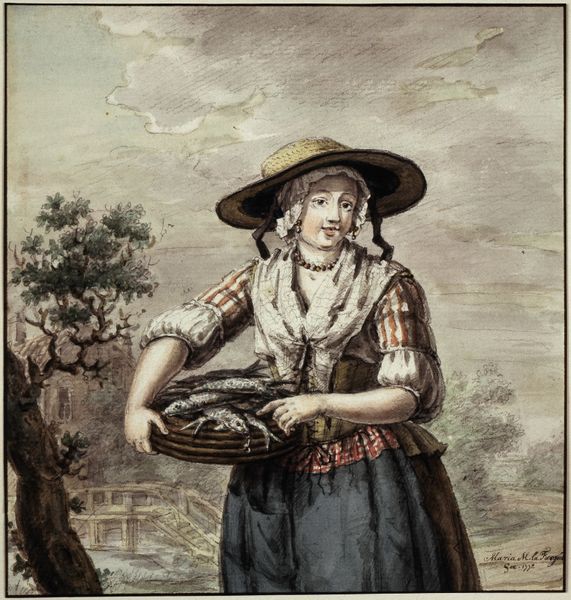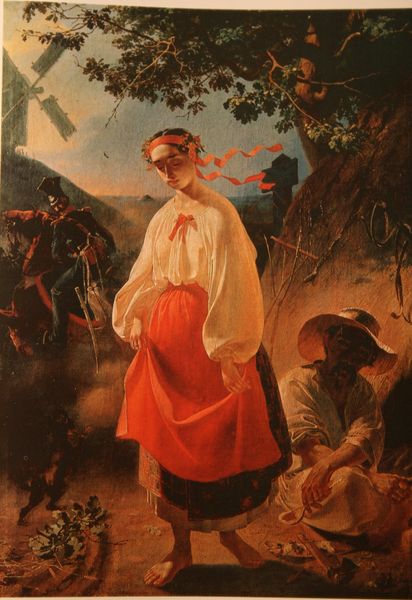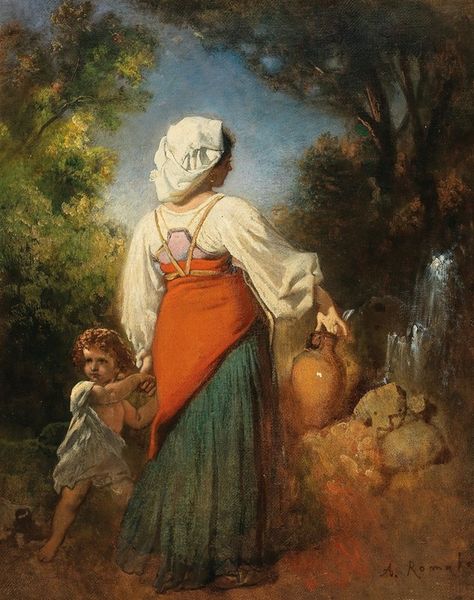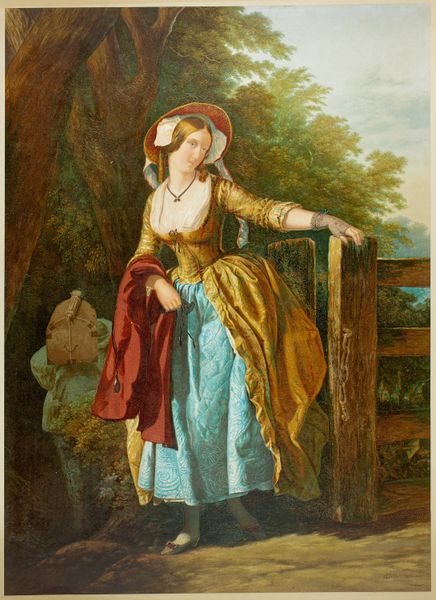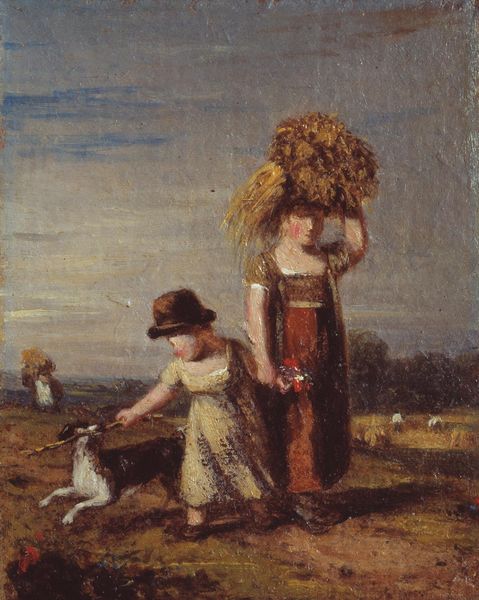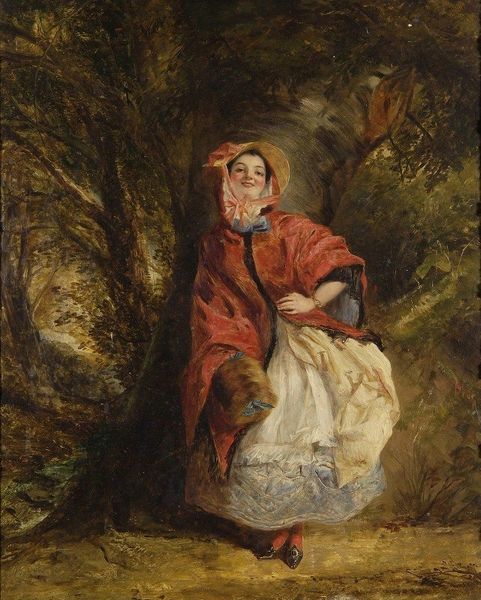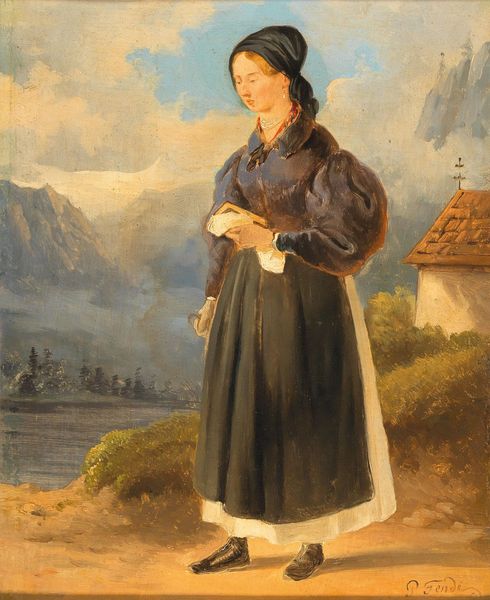
watercolor
#
portrait
#
figurative
#
landscape
#
figuration
#
oil painting
#
watercolor
#
romanticism
#
watercolour illustration
#
genre-painting
#
watercolor
Copyright: Public Domain: Artvee
Curator: Let's focus on Eugène Delacroix’s “Peasant Women from the Region of the Eaux-Bonnes,” a watercolour created around 1845. I’m struck by its immediate tenderness and melancholy; it’s almost a vignette from a story yet untold. The soft watercolor washes evoke a profound sense of human experience. Editor: It definitely carries an air of contemplation, wouldn't you agree? Considering the time, Delacroix's work begs us to consider his context as a figure operating within structures of class and representation. How did his gaze influence the depiction of these women and their community? Curator: It’s a valid and critical perspective. In his romantic era depiction, we find a certain negotiation of the relationship between art and its social responsibility. Did he engage with them beyond his representation of them, beyond capturing their likeness in watercolour? It certainly urges considerations of class dynamics. Editor: Precisely. This piece feels like an ethnographic study rendered through a Romantic lens. Their positioning within the mountainous backdrop elevates the romanticized rural, perhaps drawing on broader political implications related to French identity and periphery. Do the visual cues normalize or disrupt the existing social power structures? Curator: That's astute. The romantic movement frequently centered marginalized communities within the French landscape, reflecting political themes of nationhood and the rise of romantic nationalism. Are these figures symbols for those narratives, contributing to it by perhaps giving the idea of an idealized national image? Editor: Absolutely. The Eaux-Bonnes region as a location matters too. Spa towns often acted as social microcosms. This wasn’t just a chance encounter, Delacroix was operating within a social and cultural space deeply marked by class and leisure. How does that shape our understanding of his art? Curator: I think this work exemplifies the inherent paradoxes within art, simultaneously engaging in formal exploration while inevitably reflecting the society within which it's made. Thanks for this. Editor: It highlights how even seemingly gentle art is embedded in political concerns, urging us to deconstruct rather than simply admire. A pleasure, as always.
Comments
No comments
Be the first to comment and join the conversation on the ultimate creative platform.
